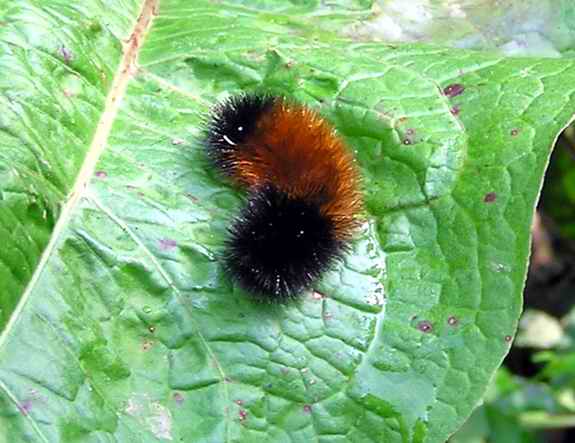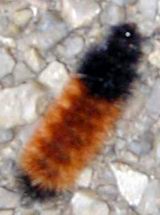|
Common
Name: Woolly Bear, Woolly Worm,
Black-ended Bear Scientific Name: Isia Isabella, Isabella Tiger Moth (larval form) The most recognized of the caterpillars since Colonial times, the Woolly Bear is most frequently found crossing roads, paths and trails in the late Fall. Potpourri:
The alternating black-brown-black bands of the Woolly Bear
Caterpillar are reputed to The stiff black and brown hairs of the Woolly Bear protect it from being eaten, as they contain a stinging chemical.
After hatching in warm weather, the larvae feed on grasses and forbs (small herbaceous non-woody plants). The mature Woolly Bears then set out in search of over wintering sites. That is why you often see them crossing trails. |

 provide a forecast of the severity of the on-coming winter.
provide a forecast of the severity of the on-coming winter.